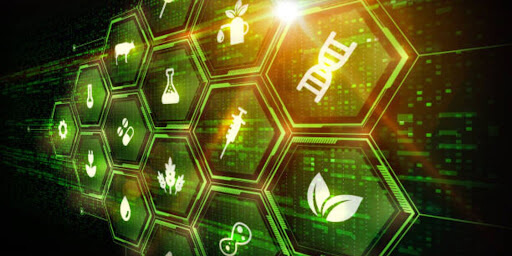 1-800-805-5783
1-800-805-5783 
The cutting-edge branch of biotechnology known as gene editing enables researchers to alter the DNA of all living things, including people, plants, and animals. It offers the chance to change particular genes, remove or add DNA sequences, and even fix genetic mutations linked to different diseases. CRISPR-Cas9 is one of the most powerful and popular gene-editing methods.
A naturally existing system in bacteria called CRISPR (Clustered Regularly Interspaced Short Palindromic Repeats) offers tolerance to viral infections. The CRISPR-Cas9 gene editing tool was made possible by harnessing this system and the Cas9 enzyme. It operates by precisely inserting modifications into targeted DNA sequences.
The guide RNA (gRNA) and the Cas9 enzyme are the two essential parts of the CRISPR-Cas9 system. The target DNA sequence is recognized and bound to by the gRNA, which directs the Cas9 enzyme to that position.
The Cas9 enzyme slices the DNA strands after binding to the target DNA, enabling the alteration of genes. The desired genetic alterations can be made, such as adding new genetic material or replacing an unhealthy gene.
The invention of CRISPR technology, which is straightforward, practical, and versatile, has revolutionized gene editing. It has advanced research across several disciplines, including biotechnology, medicine, and agriculture.
Researchers are investigating its potential for treating hereditary disorders like muscular dystrophy, sickle cell disease, and cystic fibrosis. In addition, CRISPR is being used to research gene function, create disease models, and genetically modify crops to increase productivity and tolerance to pests and other environmental factors.
Although CRISPR technology has much potential, safety, and ethical issues come with using it. The responsible use of gene editing in people is still being debated, along with issues like permission, unforeseen consequences, and the difference between therapy and augmentation. Rules and regulations are being created to guarantee that gene editing is utilized ethically and for the benefit of society.

Implementing gene editing in agriculture has the potential to offer numerous advantages, but it also presents some challenges. Here are some potential benefits and challenges associated with gene editing in agriculture:
Benefits:
The potential benefits of gene editing in agriculture are significant, but some concerns need to be addressed. One problem is that gene-edited crops could escape into the wild and cross-breed with wild relatives. This could introduce new genes into the wild population, which could have unintended consequences.
Another concern is that consumers may be reluctant to accept gene-edited foods. This is because there is still some uncertainty about the long-term safety of gene editing. However, these concerns will likely be addressed as more research is conducted.
Overall, the prospects for gene editing in agriculture are up-and-coming.
This technology has the potential to make a significant contribution to food security and sustainability. However, it is essential to proceed with caution and to address the concerns that have been raised.
Here are some examples of how gene editing could improve food security and sustainability:
These are just a few examples of how gene editing could improve food security and sustainability. As the technology develops, even more applications will likely be discovered.
Increased crop yields: Crop qualities, including disease resistance, drought tolerance, and improved nutrient uptake, can all be enhanced by gene editing. Crop yields and food security can be increased by introducing advantageous genetic modifications.
Less need for pesticides: Crops naturally resistant to pests and illnesses can be developed with gene editing. This might reduce the need for chemical pesticides, making agriculture more environmentally responsible and sustainable.
Increased nutritional value: Crops can be enriched with vital nutrients through gene editing to improve their nutritional worth. This might aid in the fight against malnutrition and raise the standard of the food supply as a whole.
Gene editing techniques can improve crop qualities like flavor, look, texture, and shelf life. Additionally, the ability to target the genes that cause quick spoiling will increase food shelf life and decrease food waste.
Climate change adaptation: Gene editing can develop crops that are more resistant to the effects of climate change, such as rising temperatures, water scarcity, and extreme weather events. This might help ensure agricultural output in the face of shifting environmental conditions.
Importance:
Crop Improvement: The exact alteration of plant DNA is now possible because of gene editing tools like CRISPR-Cas9. With the aid of this technique, crops can be developed with enhanced features like disease resistance, drought tolerance, increased yield, and higher nutritional value.
Scientists can speed up the breeding process and produce plants with desirable features more quickly than conventional breeding techniques by altering genes.
Disease Resistance: Plant diseases seriously threaten the world’s food supply. Crops resistant to diseases, viruses, fungi, and other pests can be produced thanks to gene editing. Scientists can lessen crop losses and the requirement for chemical pesticides by introducing or increasing resistant genes.
This increases agricultural sustainability, reduces its adverse effects on the environment, and protects public health.
Improved Nutritional Content: Gene editing can improve the nutritional content of crops to combat malnutrition and nutrient shortages. For instance, researchers can alter crops to contain more vital vitamins, minerals, and micronutrients. This could prevent shortages in areas where specific nutrients are deficient, resulting in better public health.
Environmental Sustainability: Gene editing can support sustainable agriculture by lowering the need for inputs like water, fertilizer, and pesticides. Crops can flourish in harsh conditions by improving drought resistance and nutrient usage efficiency, reducing resource consumption and agriculture’s environmental impact.
Gene editing can also facilitate the production of crops with enhanced nitrogen fixation, lowering the need for synthetic fertilizers and minimizing their detrimental effects on the environment.
Climate Change Adaptation: Gene editing can be beneficial in creating crops resistant to climate change. With the emergence of new pests, rising temperatures, altered precipitation patterns, and other issues brought on by climate change, gene editing provides a mechanism to insert adaptive features into crops quickly.
Crops can better endure and adapt to climate change by altering genes linked to heat tolerance, water usage efficiency, and resistance to pests and diseases, assuring food security in the face of climatic uncertainty.

CRISPR-Cas9 system and its working principle
The CRISPR-Cas9 system is a revolutionary gene-editing technology that allows scientists to make precise changes to an organism’s DNA. CRISPR-Cas9 stands for Clustered Regularly Interspaced Short Palindromic Repeats and CRISPR-associated protein 9.
The working principle of the CRISPR-Cas9 system involves two key components: the guide RNA (gRNA) and the Cas9 protein.
Here’s a step-by-step explanation of how the CRISPR-Cas9 system works:
The CRISPR-Cas9 system’s simplicity and versatility have revolutionized the field of genetic engineering, allowing researchers to study gene function, develop disease models, and potentially treat genetic disorders in the future.
However, it is essential to note that the technology is still being researched and refined, and ethical considerations and regulatory frameworks need to be considered when applying CRISPR-Cas9 in various contexts.
Gene editing, specifically using technologies like CRISPR-Cas9, has significant potential for various applications in agriculture. Here are some examples of how gene editing can be utilized in agricultural practices:
It is important to note that using gene editing in agriculture raises ethical and regulatory considerations. Ensuring the responsible and transparent deployment of gene-edited crops is crucial to addressing potential risks and maintaining public confidence in these technologies.
Current regulations and policies surrounding gene editing in agriculture
In addition to these national regulations, several international organizations are involved in regulating gene editing in agriculture. These organizations include the Codex Alimentarius Commission, the International Plant Protection Convention, and the Convention on Biological Diversity.

Golden Rice: Golden Rice is a genetically modified rice variety engineered to produce beta-carotene, a precursor to vitamin A. Vitamin A deficiency is a significant public health problem in developing countries. Golden Rice is a way to address this problem. In 2018, a study published in Nature Biotechnology found that Golden Rice could significantly reduce the risk of vitamin A deficiency in children.
Drought-tolerant corn: Drought-tolerant corn is another example of a gene-edited crop that can potentially improve food security. This type of corn has been engineered to be more resistant to drought, which could help farmers in areas with limited water resources to produce more food.
In 2017, a study published in Nature found that drought-tolerant corn could increase yields by up to 30% in drought-prone areas.
Pest-resistant potatoes: Pest-resistant potatoes are another example of how gene editing can improve crop yields. This type of potato has been engineered to resist the Colorado potato beetle, a major pest that can destroy potato crops.
In 2016, a study published in the journal Nature Biotechnology found that pest-resistant potatoes could reduce the use of pesticides by up to 90%.
Of course, some potential risks are also associated with gene editing in agriculture. These risks include the possibility of unintended consequences, the potential for gene-edited crops to escape into the environment, and the ethical concerns raised by some people about gene editing in food production.
It is essential to carefully consider these risks and ethical considerations as gene editing technology continues to develop. However, the potential benefits of gene editing in agriculture are significant, and the technology has the potential to make a real difference in the lives of people around the world.

Gene editing is a powerful new tool that has the potential to revolutionize agriculture. By allowing scientists to make precise changes to the genomes of plants and animals, gene editing can improve food security and sustainability.
One of the most promising applications of gene editing in agriculture is developing crops resistant to pests, diseases, and drought. This could reduce the use of pesticides and herbicides, which can harm the environment. Gene editing could also improve crops’ nutritional content, making them more nutritious and accessible to people worldwide.
Gene editing could improve the quality and yield of crops and make farming more sustainable. For example, it could develop crops better suited to growing in marginal or degraded soils, increasing food production in areas that are currently unsuitable for agriculture.